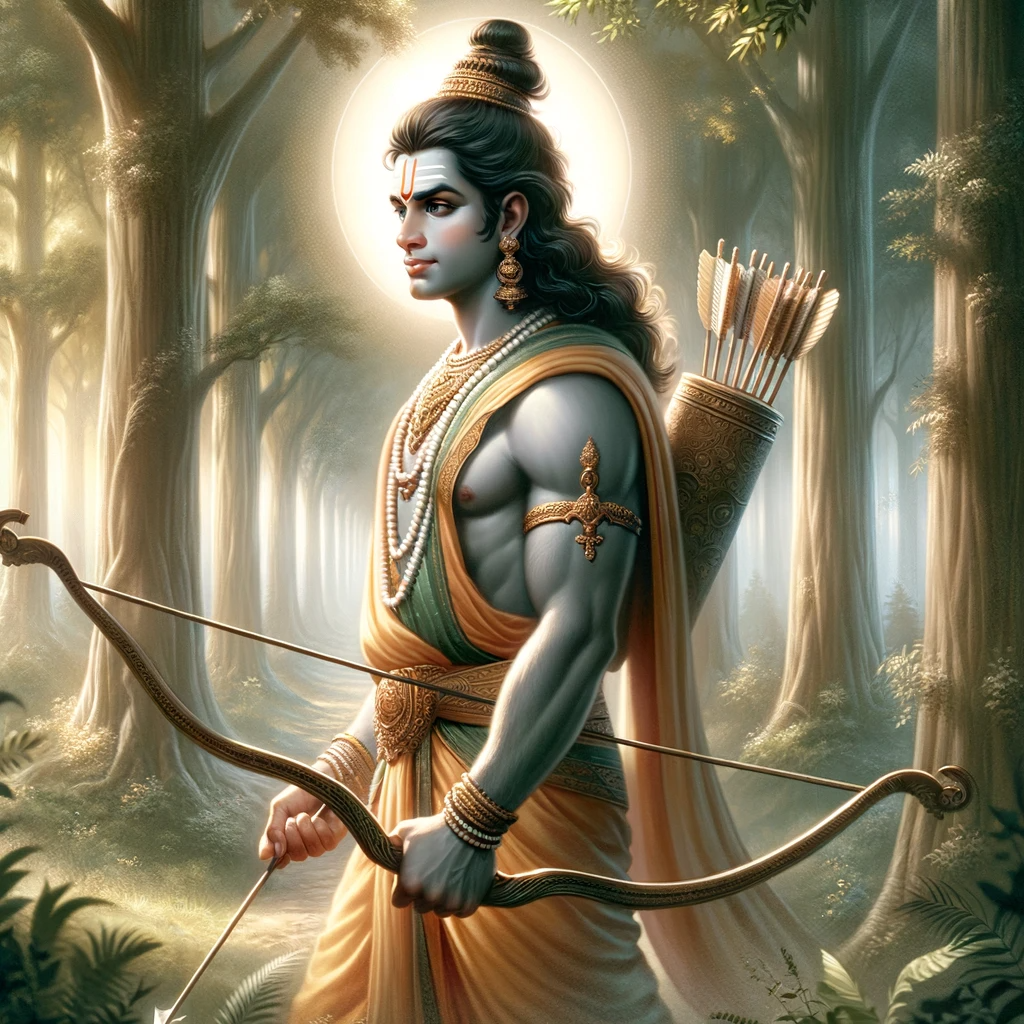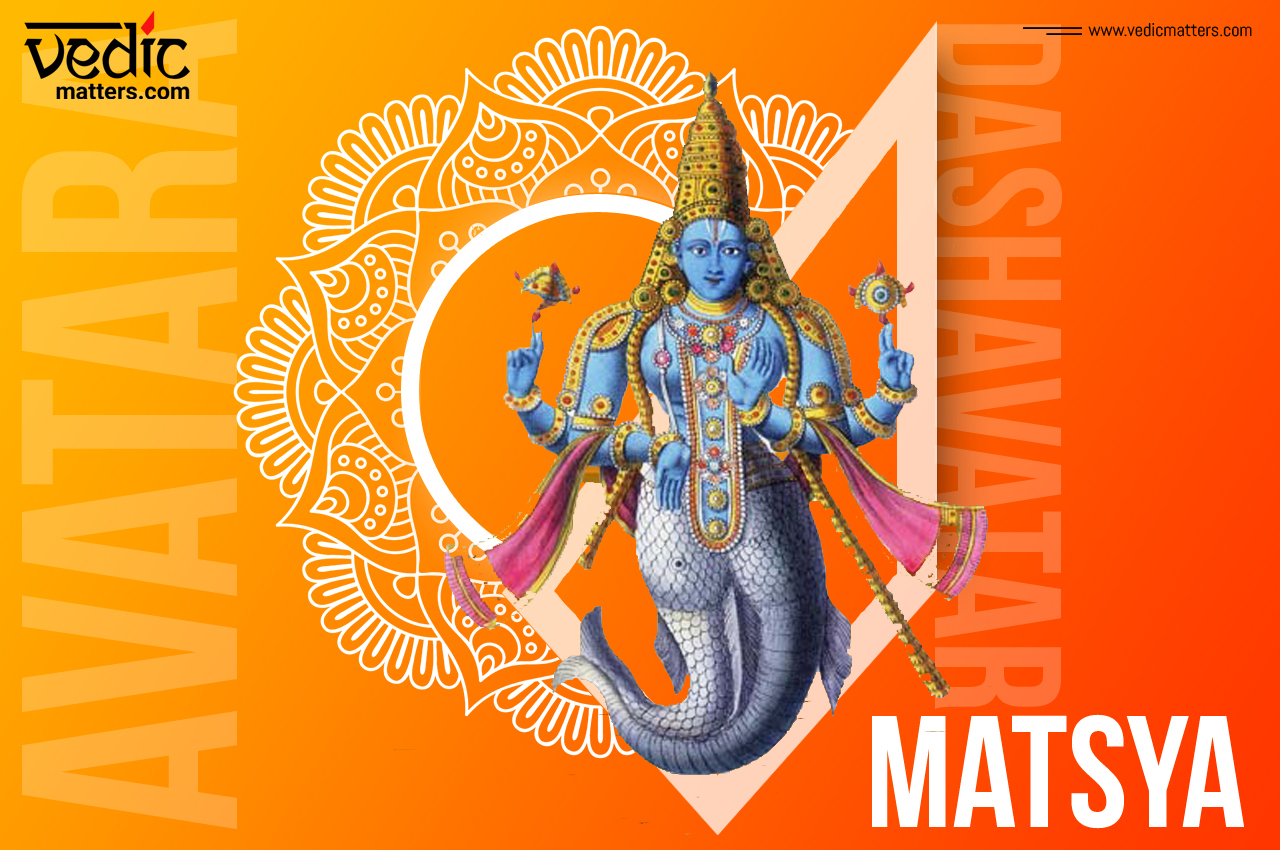The Enduring Legacy of Lord Rama: Symbolism and Life Lessons

Brahma, Vishnu and Mahesh - the three pillars of Sanatana Dharma and the basis of all the great stories you have ever heard! While Lord Brahma is the basis of all the creation and Lord Shiva that of destruction, it’s Lord Vishnu, the great preserver who runs and protects the world.
While the stories of gods and goddesses taking various incarnations on earth are quite famous, the most beloved of them all are the ten famous incarnations of Lord Vishnu, also known as Dashavatara.
Every time there was a disorder in the world beyond the scope of any hope, Lord Vishnu incarnated in one of his many forms to restore order, peace and righteousness. Matsya avatar was his very first incarnation - this is where the enchanting story of Dashatavar begins.

To really understand the significance of the Matsya avatar of Lord Vishnu, you will first need to know how life was back then. The story has many versions, but the most beloved and trusted one comes from the Bhagavad Purana...
It was before the beginning of the golden age of Satya Yuga (the era of truth) when the people on earth had started leading immoral and selfish lives. When Gods realised that there was no saving these people from their immoral ways, they collectively decided to flood the world and restore order again.
It was Lord Brahma’s work to recreate the world in accordance with the guidelines mentioned in the Vedas - the source of all the knowledge and wisdom.
Tired from the preparation, Lord Brahma fell asleep in the middle of his work and out of his nose was born a demon with the head of a horse, called Hayagriva. Hayagriva steals the Vedas from Lord Brahma and escapes.
It was Lord Vishnu who notices that a theft has taken place and he descends on the earth in the form of a small fish - the Matsya avatar and appears to the great King Vaivasvat Manu.

King Manu was not only a devout and moral person but also an ardent devotee of Lord Vishnu. Once when he was performing austerities, he took some water from the ocean in his cupped hands and found that there was a tiny fish there.
The king was about to release the fish back into the waters when the fish spoke and requested the king to save its life as the larger creatures of the sea would eat it. King, taking pity on the poor fish, put it in a small tank back in his palace.
To his great surprise, the fish started growing in size and was soon too big for the tank. The King then transferred the fish to a small pond but again the fish soon grew so big that even the pond was not enough. Not before long, the king had to consider putting the fish into a river and then back into the ocean.
When he took the fish to the ocean, it was revealed to him that this fish was none other than the great Lord Vishnu who had been testing the faith and greatness of the Dravida King Manu. As King Manu bowed in front of the great Matsya, the Lord told him about the upcoming flood.

Lord Matsya instructs the great King to collect one living being from all the species of plants and animals, the seven great sages and take them onto an ark to save them from the destruction.
On the seventh day when heavy rains and storms hit the earth, the great Matsya appeared in front of the King and asked him to tie the ark to his horn using the divine serpent Vasuki as a rope. Lord Matsya then protected the ark from getting destroyed in the great flood.
While trying to save them and take them up towards Mount Hemavan, Lord Matsya also slew the demon Hayagriva and restored the stolen Vedas back to Lord Brahma. As the boat progressed towards Mount Hemavan with the support of Lord Matsya, he revealed many great truths and imparted his wisdom to the great King.
Finally, after reaching Mount Hemavan, Lord Matsya disappeared from the earth after giving his instruction to King Manu on how to restart, replenish and run this new world with a new set of rules and moral values. This set of knowledge came to be known as Manusmriti - the memories of Manu.

While many may find it difficult to understand the deeper meanings of the story, it is believed that a fish being the first incarnation of Lord Vishnu refers to the evolutionary fact that it was the aquatic life that first came into existence.
The story, as most from Hindu mythology, must be treated as a parable if we are to derive any real meaning from them. As of now, there are various interpretations available, one of the most famous ones being the comparison of Sri Aurobindo’s Kundalini awakening.
The small fish represents the descent of Kundalini, the serpent of awakening which starts out as small but soon outgrows every place it inhabits. The fish - the awakened knowledge - is what later on saves the fate of humanity.
The flood symbolises the Maya - the delusion of the materialistic world’s desire and how it threatens the existence of our very peace. The boat represents our consciousness - something that can only be saved through awakening (fish) from the destruction that waves of the flood (Maya - the delusion of the materialistic world) cause.
The seven great sages represent our 7 chakras, the centres of knowledge in our body. The boat is taken to Mount Hemavan for protection from worldly desires, to help us rise above them in order to gain truth and peace. Mount Hemavan represents our head - the highest centre of knowledge.
Once your kundalini is awakened, it frees you from all your worldly desires and boundation. In short, the story of Lord Matsya is a parable for the awakening of greater knowledge within us. It’s the story of self-enlightenment.
Get weekly updates on the newest articles, quotes and newsletters right in your mailbox. Subscribe now
